Building Literacy Skills Through Storytelling
Program Transcript
Student: Four dollars, Sylloc.
Davis (Interview): The overall goal for our students would be to have them see themselves as readers and writers as opposed to just teaching them from worksheets and writing letters with no meaning behind it.
Davis: So Brion. Your favorite thing that you chose was swimming trunks. Where do you like to go when you put the swimming trunks on?
Student: At the beach.
Davis: At the beach. So you like to go to the beach when you wear your swimming trunks? So what story do you want to tell me about your swimming trunks?
Student: The dinosaur at the beach with me.
Davis: The dinosaurs at the beach with me. Okay. And what did you and the dinosaur do at the beach?
Student: Um, I just flipped in the water and then I splashed.
Davis: You, I flipped in the water and then I splashed.
Davis (Interview): When children are able to draw their pictures and then see the words that are placed with those pictures, then it helps them to understand that there's a purpose for the words on the page.
Student: He was stomping on the sand.
Davis: He was stomping on the sand.
Student: 'Cause, um, he broke his, um, castle.
Davis: Oh. Was he sad?
Student: He was mad.
Davis: Oh, he was mad. Can you show me how mad looks? Oh, that's a mad face.
Davis (Interview): Other area that we have was the special interest area. Each child is able to come and do a profile of themselves, and after they finished they were able to do a story.
Davis: What color is your shirt?
Student: Blue.
Davis: Blue, and you chose pants, those pants have something special on them.
Student: It's dinosaurs.
Davis: They're dinosaurs. Wow. Everybody is talking about dinosaurs. Can you tell me a story about Jaden?
Student: He's going to the zoo.
Davis: He's going to the zoo.
Davis (Interview): As they are giving us the dictation, then we take the opportunity to review phonological awareness. That might be identifying letters, and the sound that those letters make.
Davis: Zoo starts with the letter zz
Student: Z!
Davis: Z. Zoo. And what's Jaden going to see at the zoo?
Student: Dinosaurs.
Davis: He's going to see dinosaurs at the zoo? Okay. This story says, Jaden is going to the zoo.
Davis (Interview): If they're drawing pictures and telling a story about it, then it helps them to move from facts about what they already know into being a bit more creative. It helps them to be a bit more aware of things around them.
Davis: And what are these coming down from his eyes?
Student: Crying drips.
Davis: Okay. What's another word for crying drips? When the water comes from our eyes. What's another word for crying drips?
Student: Um..
Davis: Starts with T. Huh?
Student: Tears.
Davis: Tears. You got it.
Davis (Interview): We want them to make the connection when they're looking at a real book, that they're able to write, that they're able to become authors. And that all makes for feeling better about yourself.
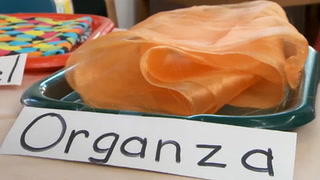
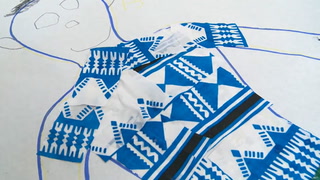


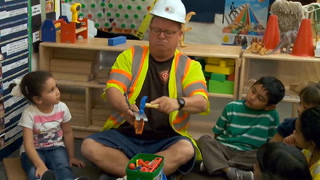

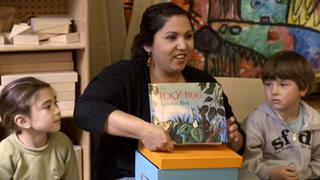

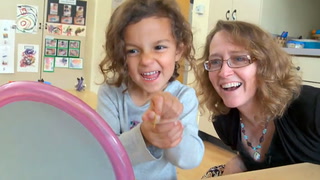
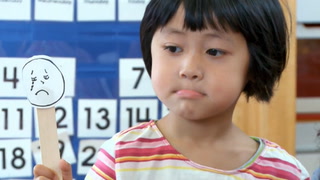








30 Comments
Jeanne Windisch Jun 21, 2022 12:53pm
Drawing pictures can help support development of writing skills by giving the student a visual of what they are writing about and also by seeing the subject they may be able to expand on it and attach more words to it.
Ms. Davis asks questions that require the student to use words to answer instead of a yes or no, agree or disagree answer. By getting them to use more words she is expanding and reinforcing the words they use.
Ms. Davis supports her students by writing down what they are saying and reading ir back to them. When the student listens to what they have said it allows them to connect their picture to words and gives greater understanding of new found vocabulary.
Angela Tarquinio Oct 5, 2020 10:56am
1. Drawing pictures support the development of writing skills because the students take ownership of their learning. The pictures are from their life experiences. They then can explain what is happening in the picture creating a story. Pictures give a purpose of the words on the page.
2. Ms. Davis asks questions that allows the students to give details about their picture. Students make connections with the world around them.
3. Mr. Davis allows for dictation and writes down what the student said. She then reads it aloud to the student. The student makes connections with the picture and the words. Students also have the opportunity to improve their phonemic skills and practice reading their own story.
Emily Santamarina Oct 5, 2020 7:46am
1. Drawing pictures helps support the development of writing by associating meaning with the words. It enhances the literary experience by helping the students visualize what the words mean.
2. Ms. Davis asks leading questions that help the students come up with creative answers to their stories. They are higher order questions that develop predicting and inferencing, i.e., "where would you wear swimming trunks?"
3. Ms. Davis writes the stories with them, helps develop their phonemic awareness and creates meaning and places importance to their ideas and pictures.
Gladys Akiri Jun 16, 2020 2:43am
1. How does drawing pictures support the development of writing skills? Drawing pictures supports the development of writing skills because it gives the student a more concrete idea of what is being talked about, it is creative and gives purpose for the words, by enabling the student understand that the picture can be explained with the words they dictate.
2. What kinds of questions does Ms. Davis ask? Ms. Davis is asking questions that promotes critical thinking, and scaffolds on their responses to ask more questions that requires use of more words, and not just yes or no responses. For example, she said, "What story do you want to tell me about your swimming trunk?"
3. How does Ms. Davis support her students to develop their literacy skills? Ms, Davis supports her students literacy skills by teaching phonological awareness by reviewing and identifying letters and sounds with the children. She also uses the scaffolded sentences elicited from the children to write sentences which also helped to explain their pictures.
Lesia Dukes Jun 2, 2020 9:26pm
Hello, my name Lesia Dukes. Here are my responses to Ms. Davis's Classroom. (1)Drawing pictures helps to support the development of writing skill by allowing the kids to be able to see the words and the spelling of the words. The pictures helps create a visual connection to the words to allow the student a way to remember spelling and structure of word recognition. (2)Ms. Davis asks the child about emotions in the story like where does she like to go and what do they like to do. Questions like what do they feel or how do they feel about the details in the story. She discuss sounds of words that help them identify the letters in words. (3) Ms. Davis help support her students to develop their literacy skills by working with them indiviually and being patient with them. She ask them questions to encourage critical thinking and also allow them to expression their thoughts and feelings.